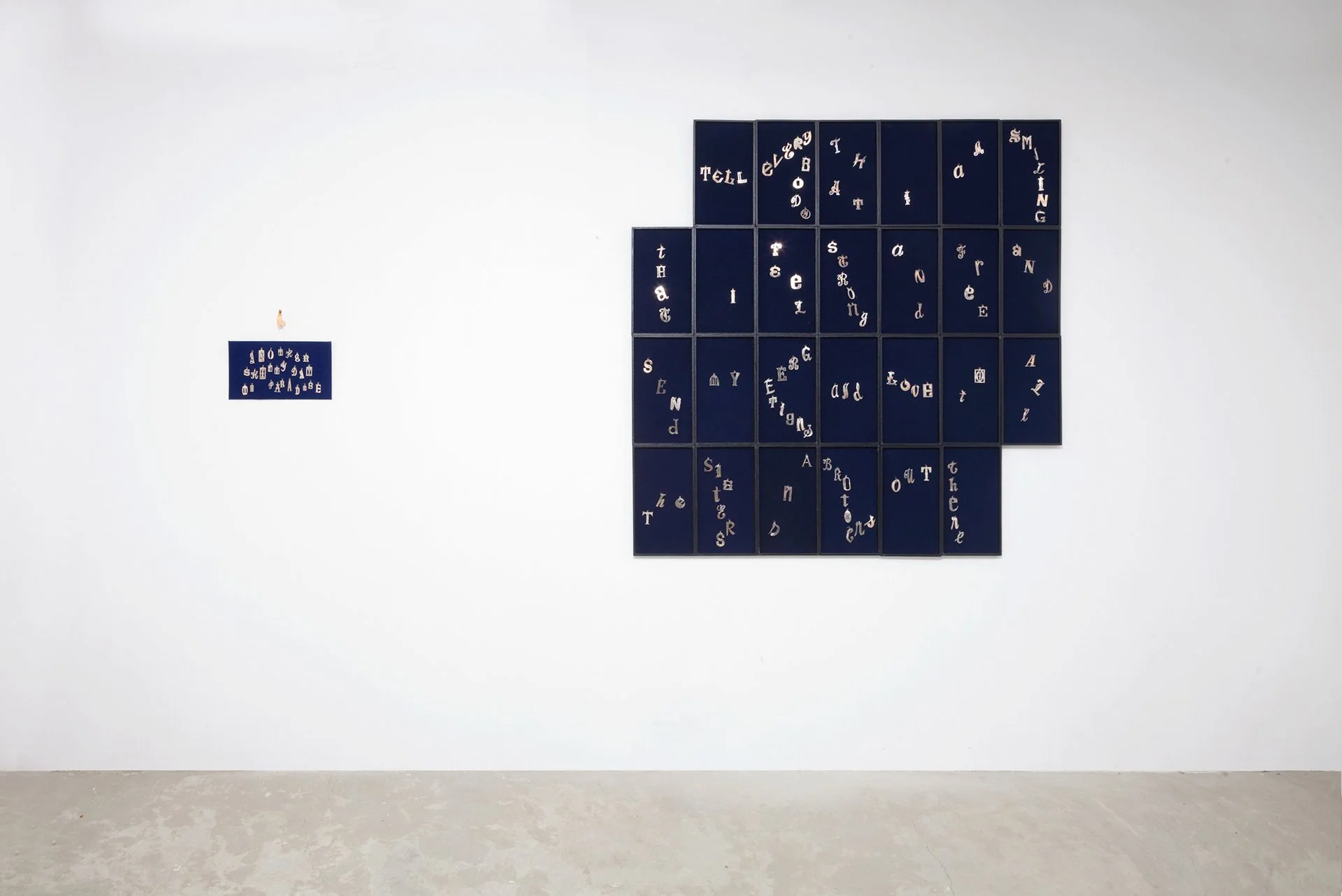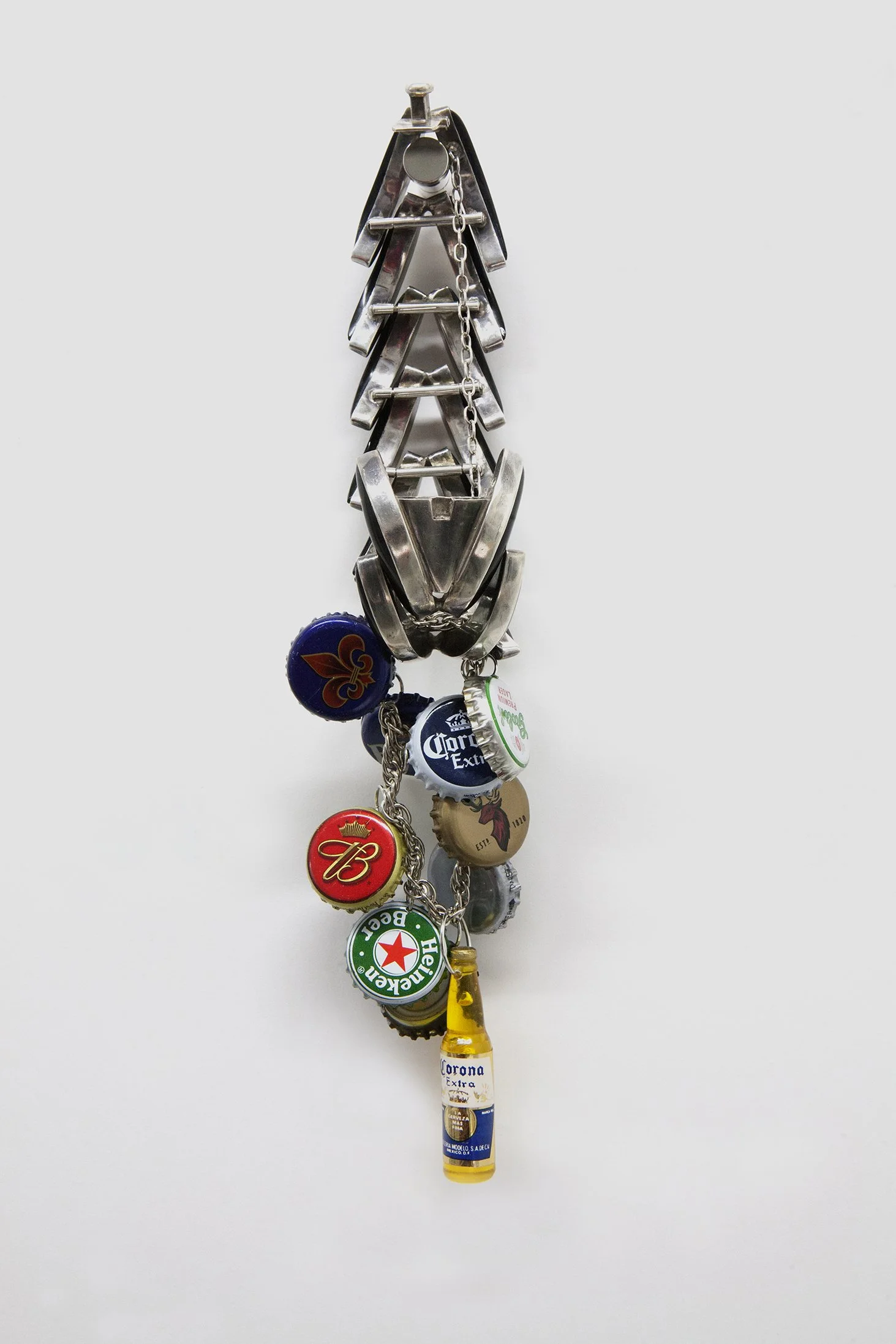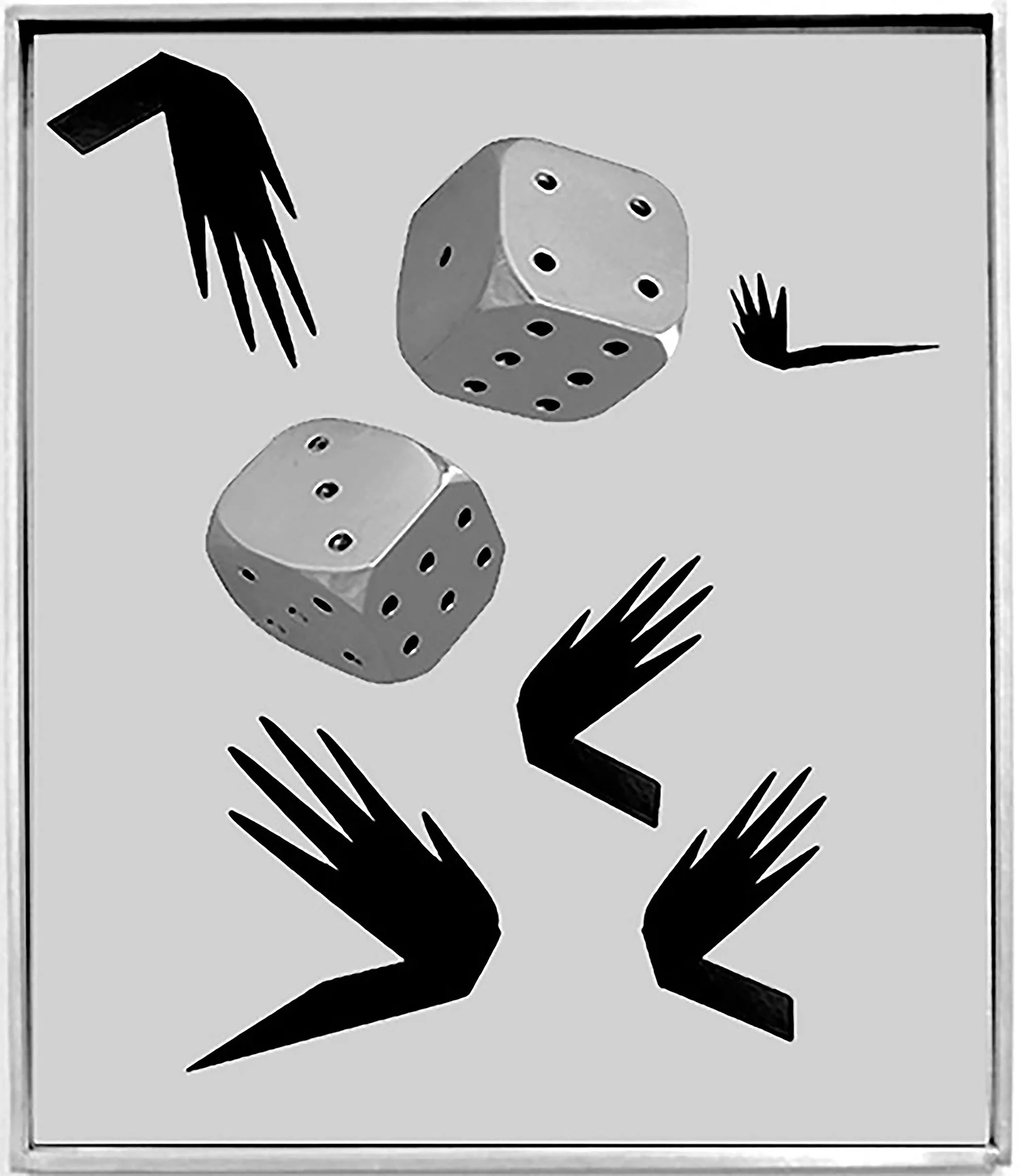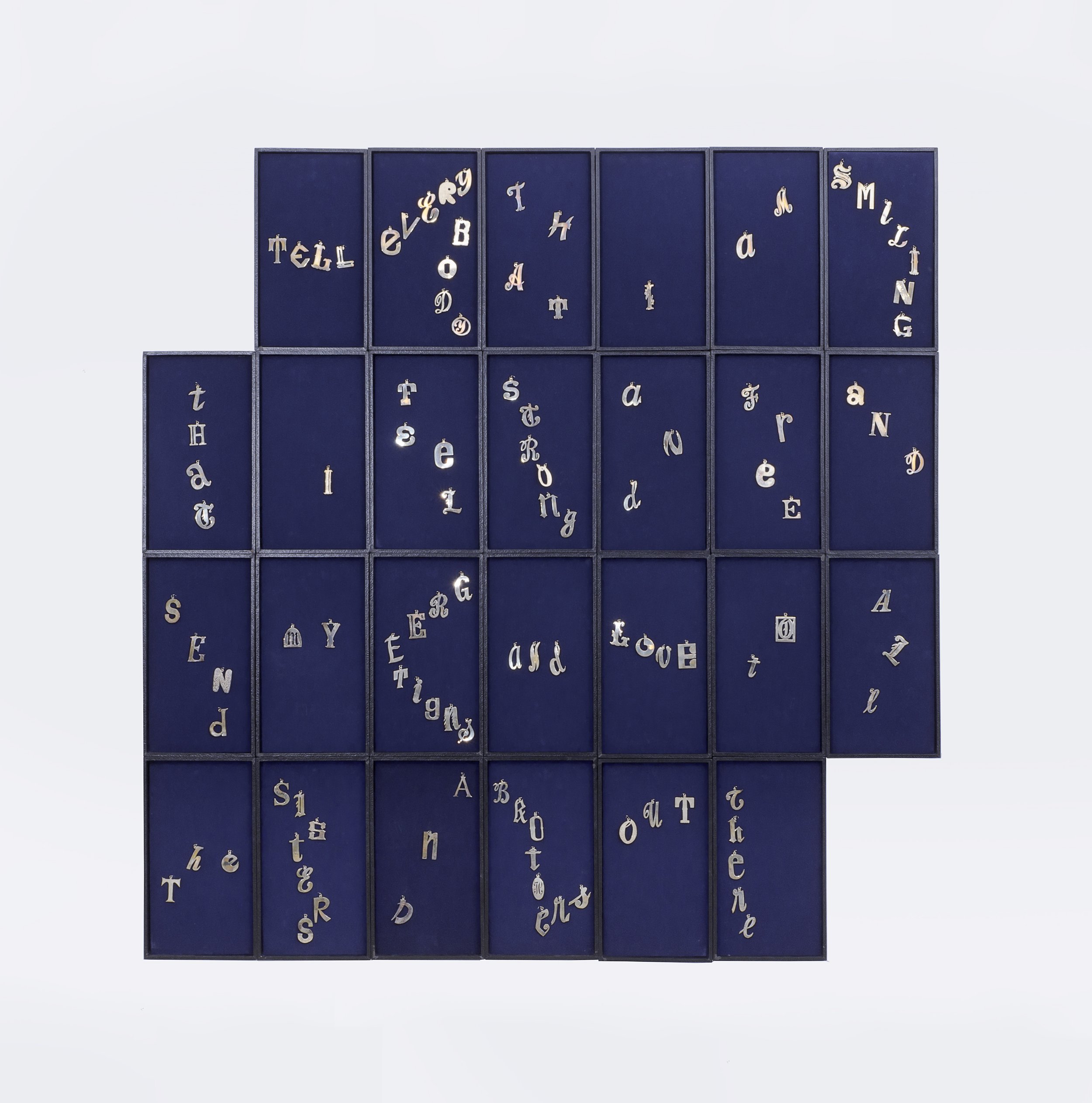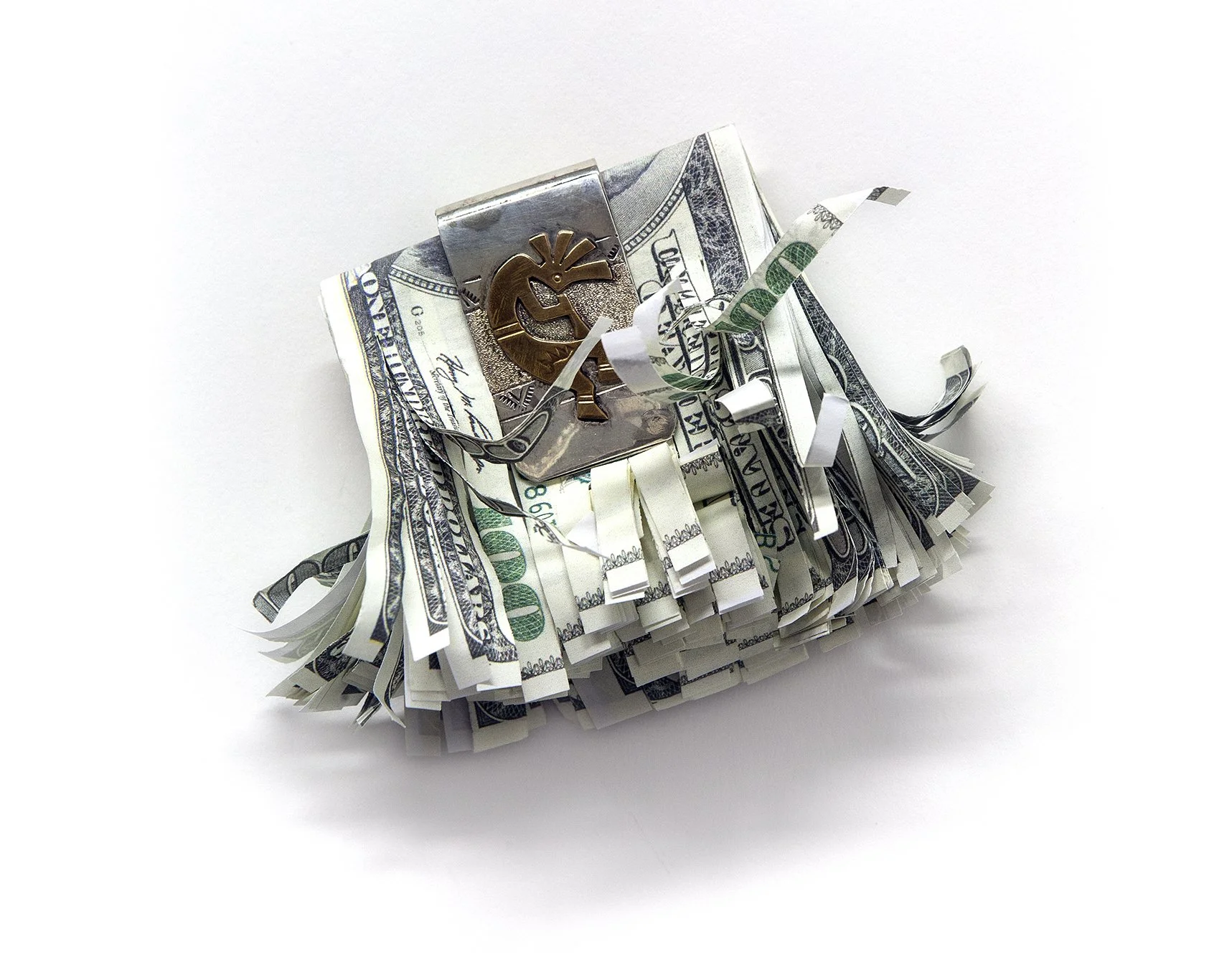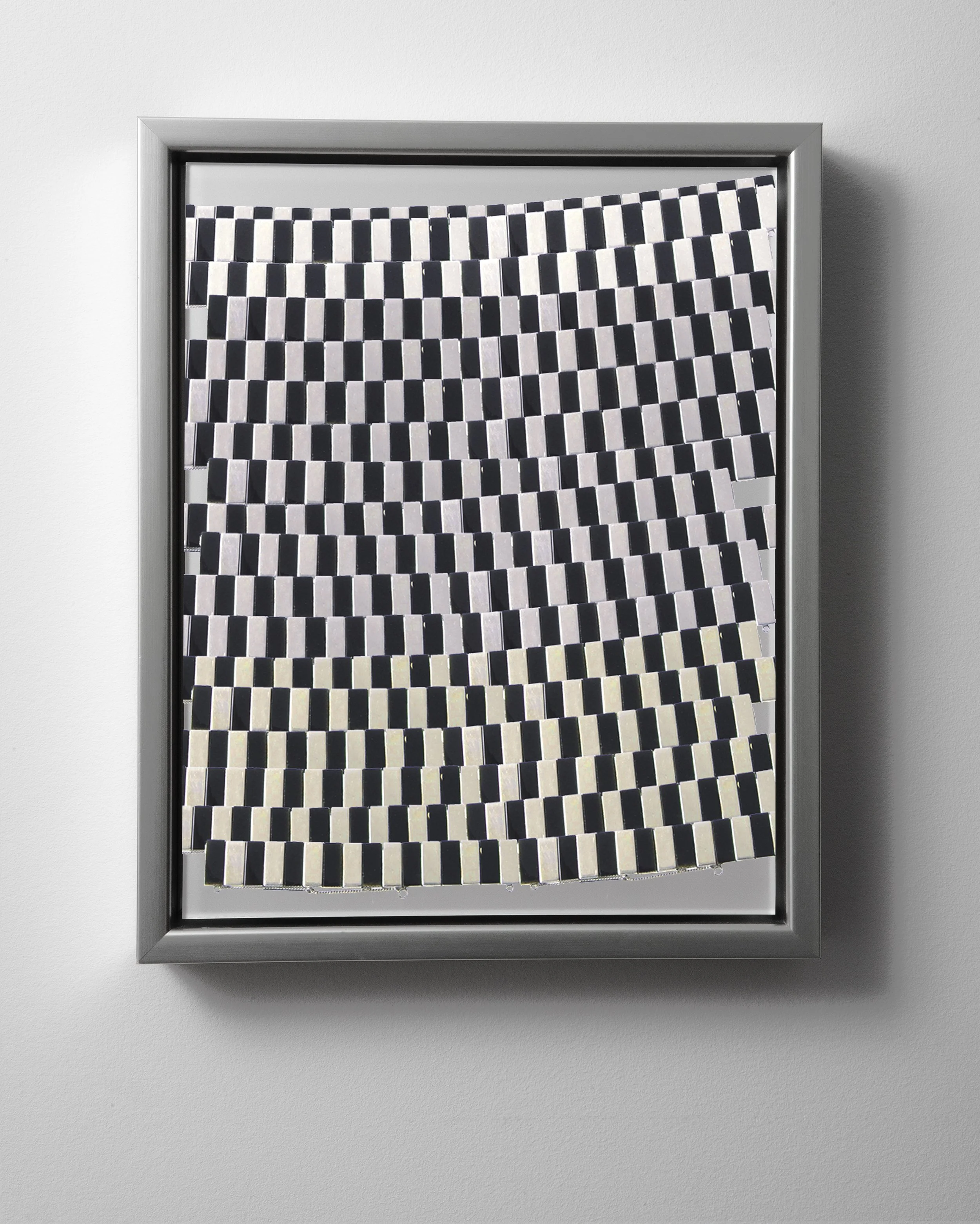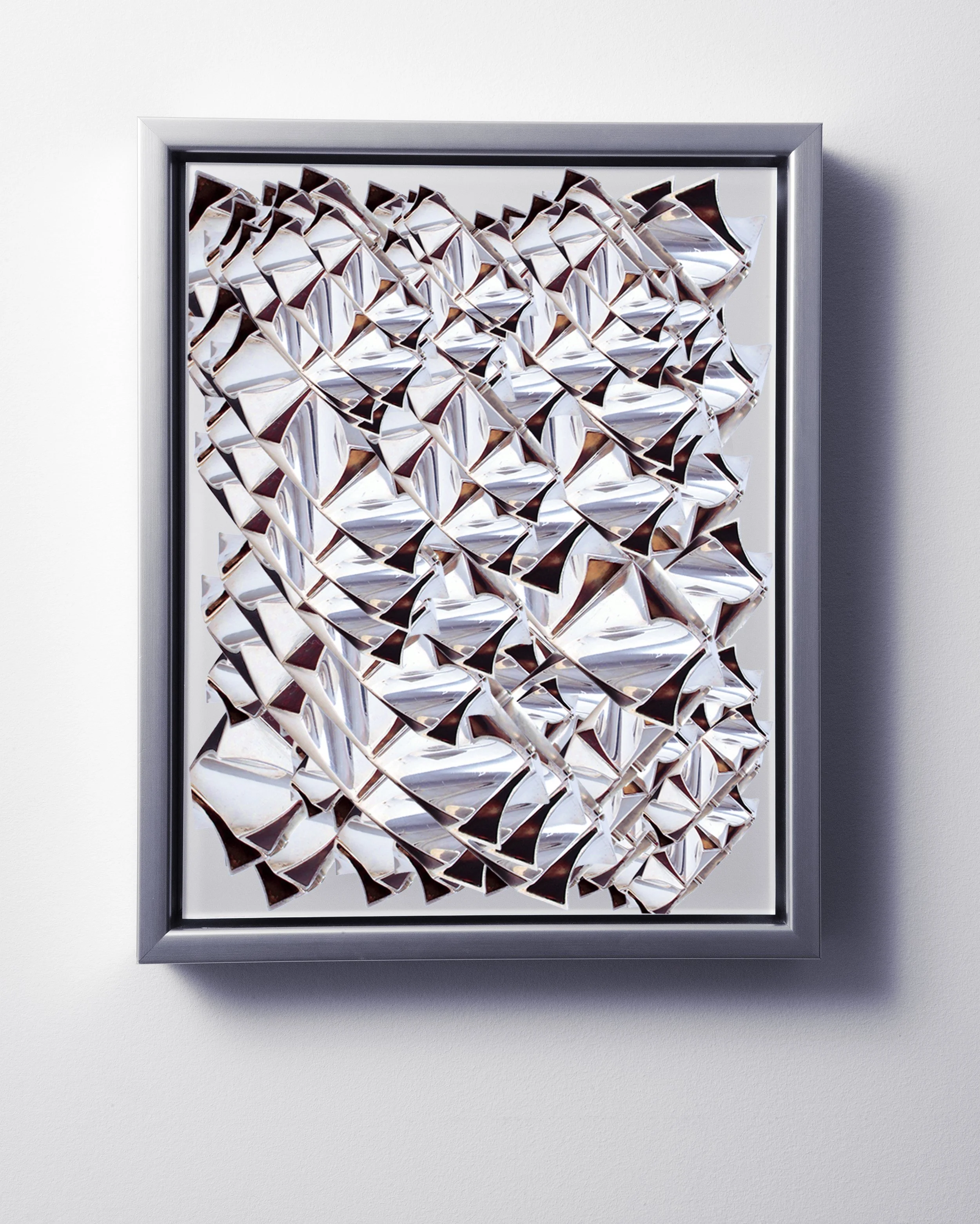THE ROAD WAS PAVED WITH SILVER
Another Day in Paradise, 2015 Hand cut .925 silver pendants, velvet, cardboard, acrylic nail, ribbon 11.4 x 13.8 x 1.5 in. / 29 x 35 x 3.8 cm
Manhattan Transfer, Installation view
The Wave, 2014 Antonio Pineda bracelet c. 1950, souvenir bracelet from Acapulco c. 2010 11 x 3.9 x 3.9 in. / 28 x 10 x 10 cm
The Road to Acapulco Was Paved With Silver (1/.925), 2016 Photo collage print on metallic paper 10.4 x 8.5 x 1.6 in. / 26.5 x 21.5 x 4 cm
Rx (Red and Yellow Kills a Fellow), 2015 Thumbprint Bracelet by Antonio Pineda, lapis lazuli and malachite bracelet by Enrique Ledesma, silver spoon, photographic snake, goblet, neo-aztec earring, Garfield pin, .925 silver chain, plastic figa 10.4 x 8.5 x 1.6 in. / 26.5 x 21.5 x 4 cm
Tell Everybody That I Am Smiling (Stockholm Syndrome), 2015 Hand cut .925 silver pendants, velvet, cardboard 67 x 57 x 1.2 in. / 170 x 145 x 3 cm
Other Futures, 2014 Sterling silver money clip, three hundred US dollars, magnet 3.5 x 3.5 x 1.2 in. / 9 x 9 x 3 cm
Grand Prix, 2016 Photo collage print on metallic paper 10.4 x 8.5 x 1.6 in. / 26.5 x 21.5 x 4 cm
Mar Picado, 2016 Photo collage print on metallic paper 10.4 x 8.5 x 1.6 in. / 26.5 x 21.5 x 4 cm
Compadres, 2016 Photo collage print on metallic paper 10.4 x 8.5 x 1.6 in. / 26.5 x 21.5 x 4 cm
THE ROAD WAS PAVED WITH SILVER
Livia Corona Benjamin’s "The Road Was Paved with Silver" explores the socio-political field of Mexico’s artisanal tourist trade, in relation to its own history as well as to the global market, within a climate of economic instability and political violence. Each piece in Corona Benjamin’s series uses .925 silver as a principal material—so that the process of decoding the source from which the silver is derived becomes part of “reading” the piece. Taking into account the conflicting histories of these materials, Corona’s pieces consider Mexico’s once booming Taxco silversmith tradition – the artists’ point of departure is Taxco’s late modernist era design ambitions, which sought to embody a Mexico both decidedly futuristic and rooted in a pre-Columbian past. Corona’s resulting works bend the distance toward our eras present flow of industrialized world trade, reflecting on individual and personalized works as they become further disembodied and authorless under the relentless pressure of mass production. In works such as Tell Everybody That I Am Smiling (Patty Hearst) or Another Shitty Day in Paradise, the hodge-podge informality suggests a plea for help designed like a ransom note, laced with ennui yet sincerely despondent. But in other works, such as The Road to Acapulco Was Paved with Silver or The Wave, the contrast in materials invokes a collective articulation of exciting possibilities, like text-messaging in silver—the knowing but nonetheless idealistic search for a new multinational identity in present-tense—perhaps in response to nascent political disruptions in trade and border relations between Mexico and the United States.


